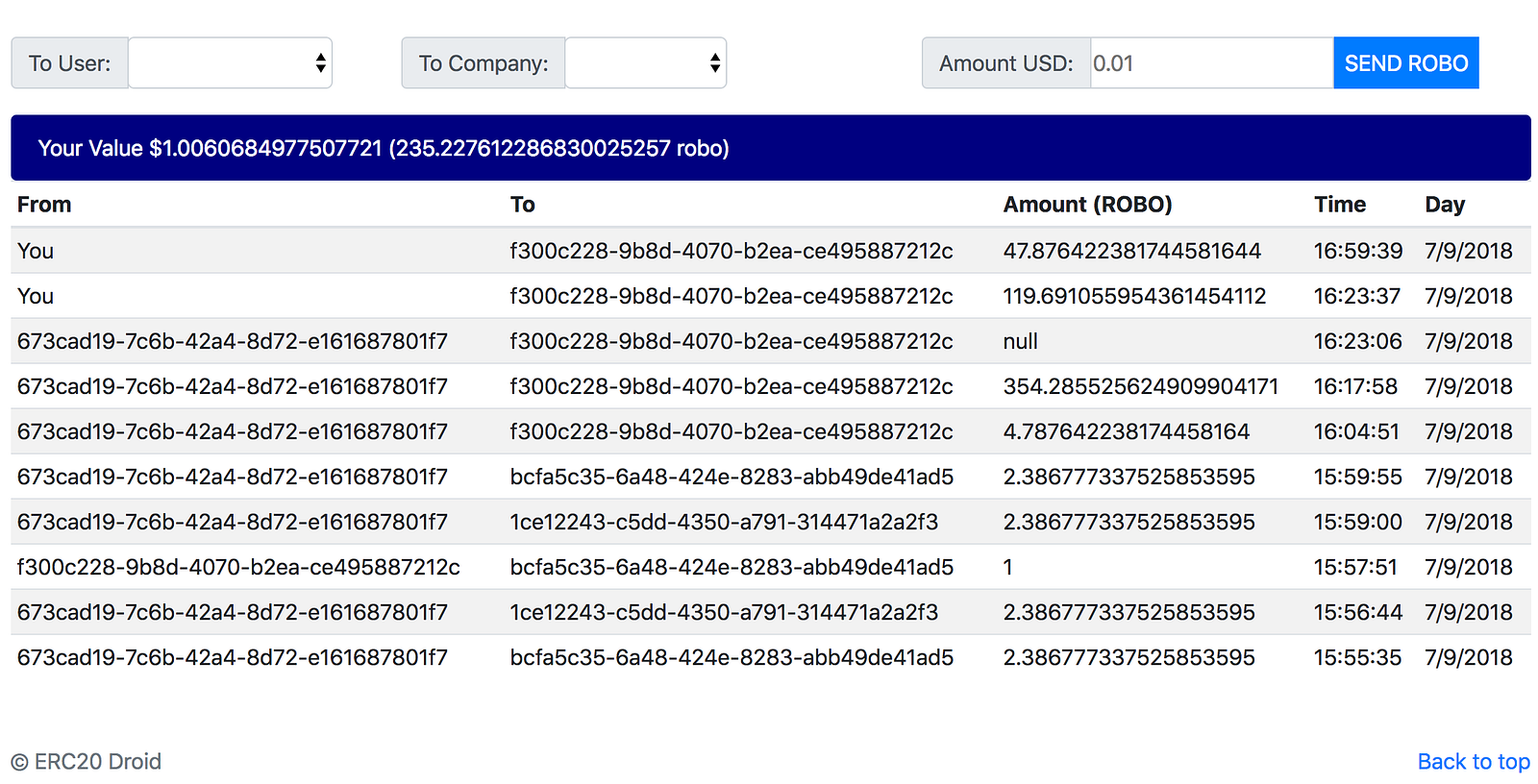OST Blockchain Hackathon Winner 2018
I signed up to do a 1 month hackathon building a token based on the OST platform which uses the Ethereum network.
The app I created is called the ‘ERC20 Droid’ which allows you to monitor your cryptocurrency tokens all from one address.
OST allowed my to create my own branded token and trade it over the network. At this moment the hackathon was created to implement and trade your token. My Robo token was created as a currency inside my application to unlock new features and potentially be used as an investment too.
What problem does your project solve for and what was the user need for creating your token economy?
The problem the `Robo token` solves is understanding the erc20 crypto tokens, and how easy it is to use and trade within the ecosystem. The Robo token empowers the ERC20 Droid application allowing users to unlock features of the app by trading Robo tokens. Also in the future I’m planning to create a Robo backed ETF, and the possibly of Ai based trading on the platform which will enable users to make trades with advanced algorithms.
What was your key goal behind doing the challenge?
I did participate in the alpha II and my friends and I have a crypto learning group where we share knowledge about blockchain. This time around I was hoping to expand my node.js knowledge from round one. Understand some new OST api’s and see how I make my application more unique and awesome to use.
How did you plan the design for your wallet features?
Well before the challenge began I had an idea of how to get the visual aspect of what I wanted to accomplish done. However on the code side implementation and execution was a bit trickier. The design was to incorporate key blockchain transaction elements pulling back the data that helps understand what happened with the transaction you made.

You can see above, this has evolved from previous posts but essentially I have the minimum amount in USD to send, and a collection of users and companies that are easily entered via dropdown. After you send a transaction it takes a few seconds but the bottom bar will reload with possible updates and if your transaction doesn’t go through you will get errors or null in the amount transacted. The time and day was a nice to have as after I send transactions I try to remember when it went through. Also the `You` part I thought would be easier that remembering your entire address. Also I have the converted amount from Robo to USD, but in this version all send balances are in USD.
What APIs did you use: Ledger, Balance, Actions, Token Details, etc.?
I used the node.js OST kit, and the ostkit.js for OST alpha for Ledger, Balance, and Actions. Some additional apis were used from cryptocompare for erc20 data points, and I also use Ethplorer for alot of current tokens associated to your wallet address.
What information did you show to the end user and why?
Mostly what I thought would be useful as a trader of crypto, and what was not so overwhelming.
How did you use design (UX/UI) for how to display this information?
I’m using a bootstrap framework for UI, and UX has been mostly just me testing out what I’m building. I have been trying to smooth out lots of the pain points and give the flow of the app a more natural experience.
What did you like about using these APIs?
It’s pretty easy to accomplish what you are trying to do, and what didn’t make sense the gitter OST team has been helpful too.
What did you learn about designing these wallet features?
There is probably more customization that could take place that I don’t have, but I wanted my app to be clean and easy to use. I think more advanced things might come later, but having some excellent fundamental will makes things very useful.
Try out my app free: (ERC20 Droid)
https://chrome.google.com/webstore/detail/erc20-droid/bflkdcgjepleehljdbiaebneindkmieo
Learn more:
https://medium.com/ostdotcom/announcing-ost-kit-alpha-phase-iii-embedded-wallet-lite-challenge-4a67ea214971
Site: https://ost.com/